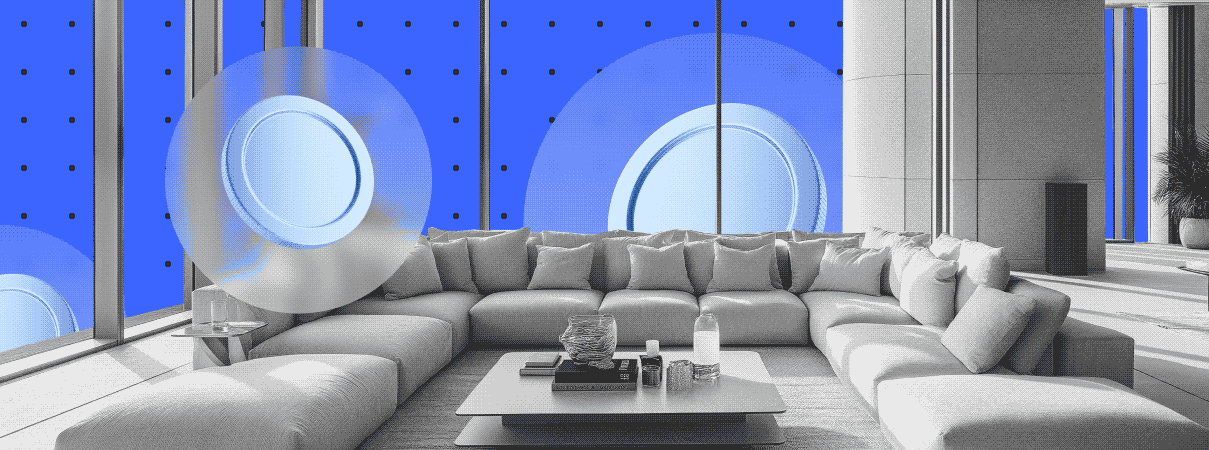The Fashion industry is one of the most active in the development of Web3 projects, NFT, Metaverse, virtual collaboration, and digital twin — everything is possible in this new era and companies are fighting for innovation and uniqueness.
Who Will Dress Our Metaverse Avatars?
One of the biggest fights in the e-industry is the creation of clothes, or skins for present and future avatars that will be used in all the Metaverses, as no one wants to connect to a virtual world full of similar characters without tasteful designs.
Nevertheless, the concept of the Metaverse is not yet defined nor fully created. Some projects are taking the lead, however, the real decentralized multi-blockchain platforms are not yet here to allow us to teleport from world to world while taking our skins with us. Therefore, companies are choosing where to develop their projects, knowing that they will have to do it all over again in the future as some companies will remain in the closed Metaverse.
For example, Burberry chose Minecraft to launch its campaign. The objects are available to buy in the real world and in the Minecraft world. Phillip Hennche, Director of Channel Innovation at Burberry, shared in their press release: “We are thrilled to be partnering with Minecraft to bring the Burberry brand story to life in such an immersive way. With a shared belief in adventure, community, and the power of creativity to open spaces, the natural synergy between both of our brands has allowed us to connect our respective worlds in a way that is unexpected and yet entirely natural. By coming together, we hope to connect communities and inspire our consumers with a whole new way to experience our brand.”
Another example would be the many collaborations with the leading (in investment) platform for Metaverse, Meta, or ex-Facebook. We discovered in a Vogue article in July that Meta will partner with Balenciaga, Prada, and Thom Browne to create designs for their avatars, creating different styles for different occasions in the Metaverse, from a fancy runway to motocross adventures with your friends, everything is possible and the skins will follow!
Several other companies are building partnerships with Metaverse tech leaders. Gucci already launched a collection on Roblox and is expanding its collaboration with 10KTF to create memories and adventures in the New Tokyo Metaverse.
Bring Users into a New World of Experience

Gucci is not an isolated case. Luxe companies do not want to only sell skins, they are looking to create a new experience for their community, build a new way to interact with their buyers, and show a new angle of the company. For that, luxe companies are innovating every day.
Louis Vuitton surprised everybody after months of silence surrounding the topic of Web3 and NFT. The famous company launched a game to celebrate its 200-year anniversary. The game features Vivienne, a little Metaverse mascot who sets out to find 200 birthday candles along a path designed around six distinct universes. Each candle unlocks elements linked to key stages in the life of Louis Vuitton, from his apprenticeship as a leatherworker to the creation of his eponymous house.
Also hidden were 30 NFTs, 10 of which were signed by the artist Beeple, a pioneer in the industry. “Media is evolving at such a speed that you have to be able to tell your story all the time with new ways of communicating,” says Michael Burke, chairman, and CEO of Louis Vuitton.
Louis Vuitton will not stop here as the luxury giant appointed Sephora’s former head of innovation, Nelly Mensah, as vice president of digital innovation and head of crypto and Metaverse. During the latest Viva Technology event, Louis Vuitton created a 600m2 “Flat LVMH,” with several discussions, one being solely on Blockchain, NFT, and the Metaverse.
A New Group of Companies Is Emerging

This Web3 wave is not only benefiting luxe companies going into the virtual economy, but it creates opportunities for virtual companies to start into the physical world. The best example would be the Bored Ape Yacht Club. It started as a hype NFT collection with cool utilities, like having a unique networking experience, yacht parties, and things like that. Now, as Bored Ape owners have the right to use the design of their NFT, they can start a physical business. People can launch virtual and physical clotheslines with their own unique design and benefit from this, an owner even launched a burger restaurant using the design of his NFT.
Some companies are focusing their efforts only on digital fashion. Everyrealm, a company focusing on creating experiences in the Metaverse, launched its own Metaverse Fashion Week. Anyone can finally attend such events and enjoy the beauty of avant-garde designs, which attracted the traditional fashion news industry, and media like Glamour and Vogue Business mentioned this new form of fashion event. As in the traditional fashion industry, some pieces were sold at auction as a 1/1 piece, whereas others were sold with limited supply.
One of the major advantages of these virtual experiences is the unlimited creative potential, where futuristic and impossible runways can be created, as we see more and more on Decentraland, or types of virtual clothes that would not be physically possible to create. Sometimes the virtual can also be a window to the physical world and create pieces that will one day be feasible thanks to new technologies.
Next Steps for the Fashion Industry and Web3

As always, the fashion industry is always evolving, and creative designers are trying to find innovative ways to produce beautiful pieces and connect with their communities.
As the Metaverse and NFT technologies will evolve, more and more companies will have a chance to start their own products in Web3. The best way is to listen to their communities and understand what people are asking. For example, the Swiss watch company Tag Heuer received a lot of demands for crypto payments, so they started a pilot program in the United States where it’s possible to buy any watch with the help of a third party’s partner. Once they realized that the demand increased and that their community received this news with enthusiasm, they developed a second offer. The Tag Heuer Caliber 4 is a new type of watch that allows holders to display their NFTs in a unique way. The company even created a tutorial for this.
Nevertheless, it is important to underline several dangers that can cross the path of Web3 fashion projects.
- Companies will have to educate their customer base to understand the technologies behind crypto, NFT, the Metaverse, and others, which can create confusion and be a bottleneck for many projects.
- Companies will also need to educate their own team in order to create a common vision of what the future would be in the virtual and physical world.
- Scams will always create problems and hurt the image of Web3 and the NFT revolution, which needs to be addressed and explained.
The future of the industry will be shaped by three parties, the native Web3 builders, the fashion companies that will develop innovative and useful products for their Web3 clients, and the will of the community that will give feedback to builders and experts in order to shape better products and to strengthen links between customers and companies.










